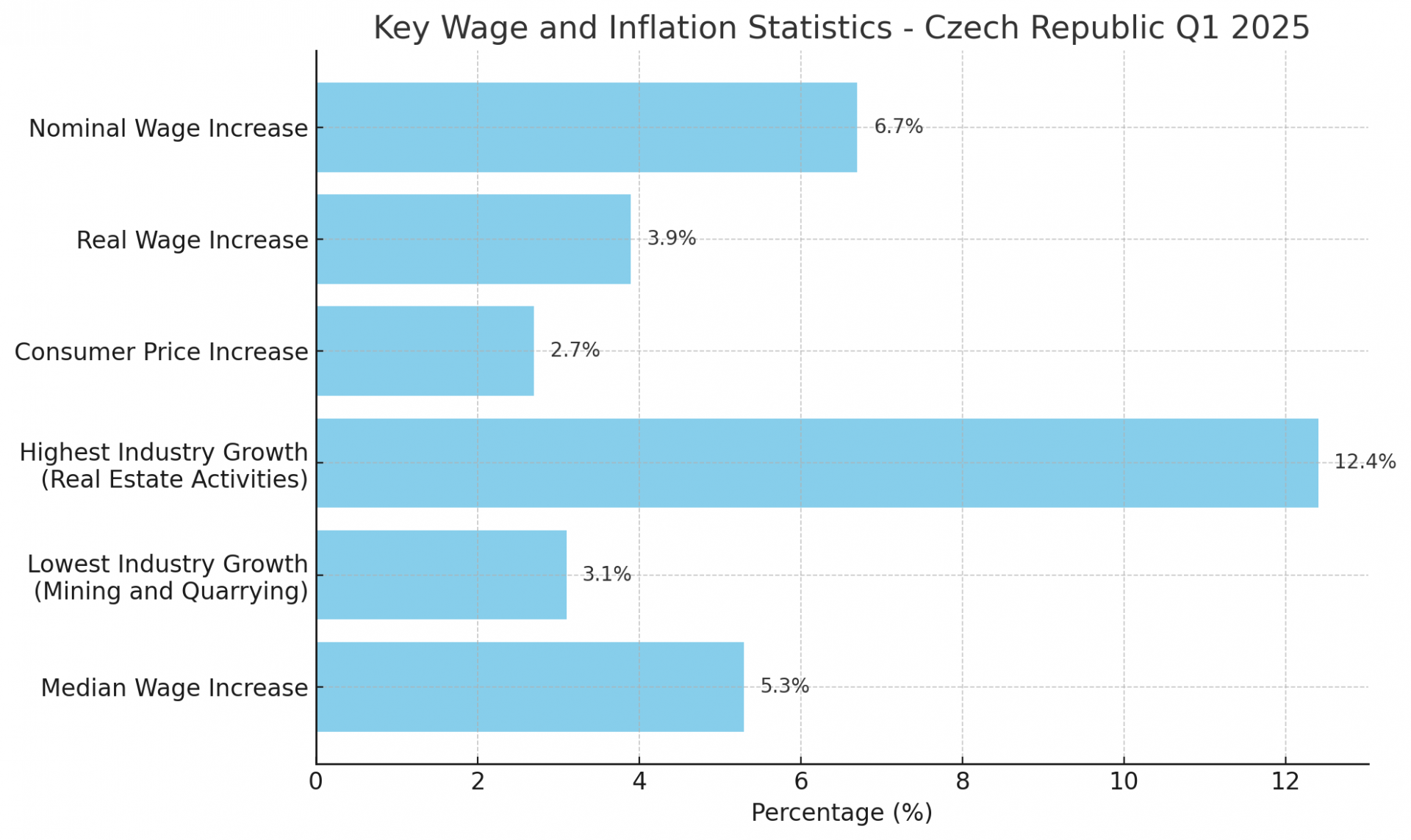2025-06-05
jobs

In the first quarter of 2025, the average gross monthly nominal wage per full-time equivalent (FTE) employee in the Czech Republic increased by 6.7% compared to the same period last year, reaching CZK 46,924. Adjusted for inflation, wages rose by 3.9% in real terms, according to data from the Czech Statistical Office (CZSO). The median wage stood at CZK 38,385. “The average real wage increased by 3.9% in the first quarter of 2025, with the nominal wage rising by 6.7% to CZK 46,924. The lowest year-on-year growth was observed in the sectors of mining and quarrying, and electricity, gas, steam, and air conditioning supply, though wage levels in these sectors remain above the national average,” said Jitka Erhartová, Head of the Labour Statistics Unit at the CZSO. Consumer prices grew by 2.7% over the same period, contributing to the real wage increase. The overall wage bill expanded by 7.1%, while employment rose by 0.4%. On a seasonally adjusted basis, the average wage grew by 1.7% compared to the previous quarter. By industry, the highest wage growth was recorded in real estate activities (12.4%), professional, scientific, and technical activities (10.9%), and construction (10.3%). The smallest increases were seen in mining and quarrying (3.1%) and electricity, gas, steam, and air conditioning supply (3.3%). The median wage, reflecting the midpoint of the wage distribution, increased by 5.3% year-on-year. Median earnings for men were CZK 41,677, while women earned a median wage of CZK 35,226. Approximately 80% of employees earned between CZK 21,136 and CZK 73,611. The average gross monthly wage is calculated based on wage funds, including overtime, bonuses, and compensation, divided by the number of employees. It represents an aggregate figure rather than individual earnings. The earnings structure statistics indicate that about two-thirds of employees earn less than the national average wage. The median wage is derived from a statistical model based on sample surveys and offers a more representative view of typical earnings, accounting for the distribution of wages across the workforce. Net wages, paid to employees after deductions for health insurance, social security, and income tax, are lower than the gross figures reported.

